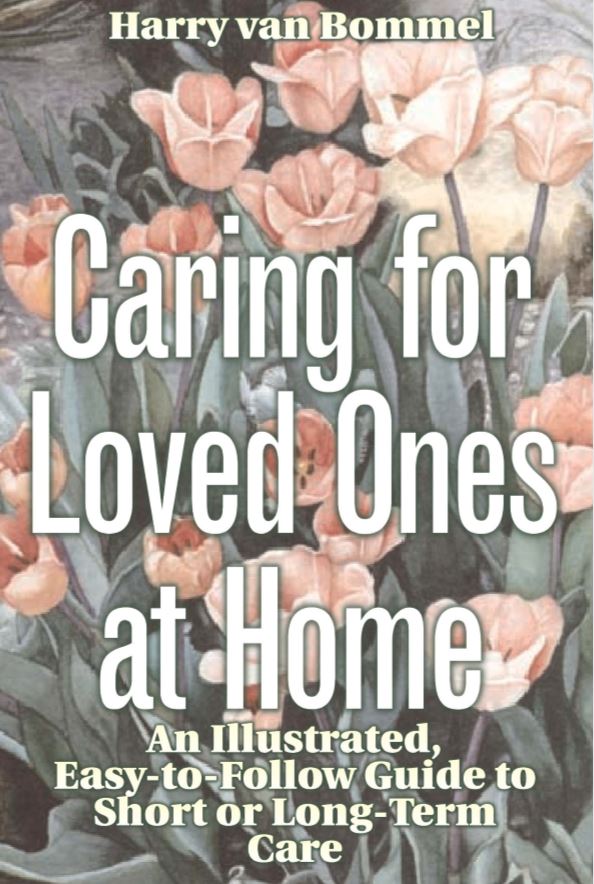Total pain is not only the sensation or feeling of pain. Total pain is a combination of physical and psychological feelings. The primary psychological component of total pain is fear. Fear can aggravate a patient’s physical pain, so fear, anxiety and other negative emotions must also be treated. Add to this list diarrhea, constipation, lack of hunger and energy, bedsores, lack of mobility, and other symptoms and you will understand the need for symptom control and relief.
Some of the symptom control and stress management techniques that home care personnel use, other than medications, include:
Diet
Some foods cause constipation while others cause loose stool. Knowing which foods cause what reaction can help caregivers to alleviate a specific symptom.
Exercise
Extended bed rest can lead to bedsores, constipation, back aches, general immobility and loss of muscle strength because of the decreased use of muscles. Exercises, active or passive, can be done by the patient or with someone’s help in bed or they can be done when the patient is out of bed. Walking, stretching and breathing are excellent forms of exercise.
Skin care
Nurses that visit patients at home will often tell you that bedsores are one of their greatest concerns. Bedsores are very painful and almost always avoidable. They occur most often when elbows, ankles, shoulders, hips, buttocks, heels and the back are in constant contact with a surface. Paralyzed or unconscious patients are most likely to get bedsores. Proper skin care includes daily washing, skin cream treatments and the use of a lamb or sheep’s skin mattress covering or watercirculating mattress pad. For people unable to move themselves in bed it is important to change their body position at least every two hours to avoid bedsores.
Massage
Gets the blood circulating, invigorates the skin and can be very soothing and or exhilarating depending on the type of massage. Everyone enjoys a massage so it is not a surprise that they are excellent for the physical and emotional well being of a patient as well.
Recreational therapy
Physical activity like a walk in the garden or a card game with friends encourages people to make decisions and participate in things that they have always enjoyed.
Art therapy
People can express feelings by doing creative work. Whatever the person decides to do may end up as a gift to a grandchild or a cherished memento for a family member or caregiver.
Music therapy
People can relax and be comforted by playing, listening, interpreting, and talking about music. Personal preferences are important to the success of music therapy just playing favourite music can be therapeutic.
Laughter
Technically it increases the production of endorphins (natural chemical pain killers in our bodies), reduces tension, distracts attention, changes expectations, and is an internal jog of organs for exercise. In another sense, laughter is contagious and lets people express their feelings in a less threatening way. It can change the mood of a place faster than any other emotion. Find a few good records or videos of comedians like Bill Cosby and sit back and enjoy yourself.
Relaxation exercises
Deep breathing, visualization, hypnosis, meditation and prayer are all ways to relax. They help to relax the body physically and mentally.
Listening
Perhaps no method of symptom control has a greater impact on a patient’s fear, anxiety, loneliness and depression than someone who listens unconditionally and answers questions in an honest way.
The purpose of all of these techniques is to give people a sense of control over their lives. Even if they are bedridden, decisions have to be made about exercises, diets and other daily living tasks. Making decisions about their care helps to give patients a sense of control. Independence is very important to people and symptom control helps them to be as independent for as long as possible.
What Prevents Adequate Pain and Symptom Control?
Errors by the Person Receiving Care
Believing the pain and symptoms are untreatable.
Not contacting the doctor for help.
Telling the doctor and family that the pain isn’t strong or the symptoms aren’t bad.
Failing to take medication.
Taking the medication at the wrong times or not consistently.
Fearing drug addiction or drug tolerance.
Believing pain killers are only for extreme pain.
Discontinuing medication because of severe side effects and not telling the doctor.
Doctors or Nurses’ Errors
Ignoring a patient’s description of pain and symptoms because it sounds extreme.
Not seeing through the patient’s brave face.
Prescribing medications that are too weak.
Giving medication only when the person says her pain has returned (effective pain control prevents the return of pain).
Believing post-surgery pain killers are suitable for cancer pain (generally, surgical pain is acute but short-lasting while cancer pain is chronic and can increase over time).
Not giving enough information about the medication, its use and when it must be taken.
Not knowing enough about different types of medication and how to move from one to another as the pain increases.
To deal with pain and symptoms, we must recognize that pain and symptoms are always real and unique for each person. Proper pain control requires the right drug or treatment, in the right way, and at the right time. Proper pain control includes some experimentation to discover the right combination of medication and treatments, requiring the complete co-operation of the patient, the family and the caregivers. When the pain is under control, other symptoms can be addressed, so that the patient’s suffering is reduced and he can remain alert and active for as long as possible.
Caring For Loved Ones At Home – Free eBook – click here.
Click here for Harry’s previous article on Pain.
This article is intended for informational purposes only. If you have any questions or are considering any recommendations, please consult your health practitioner.
























